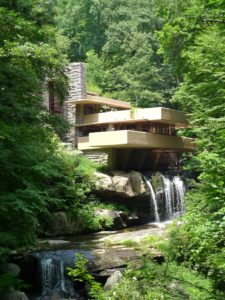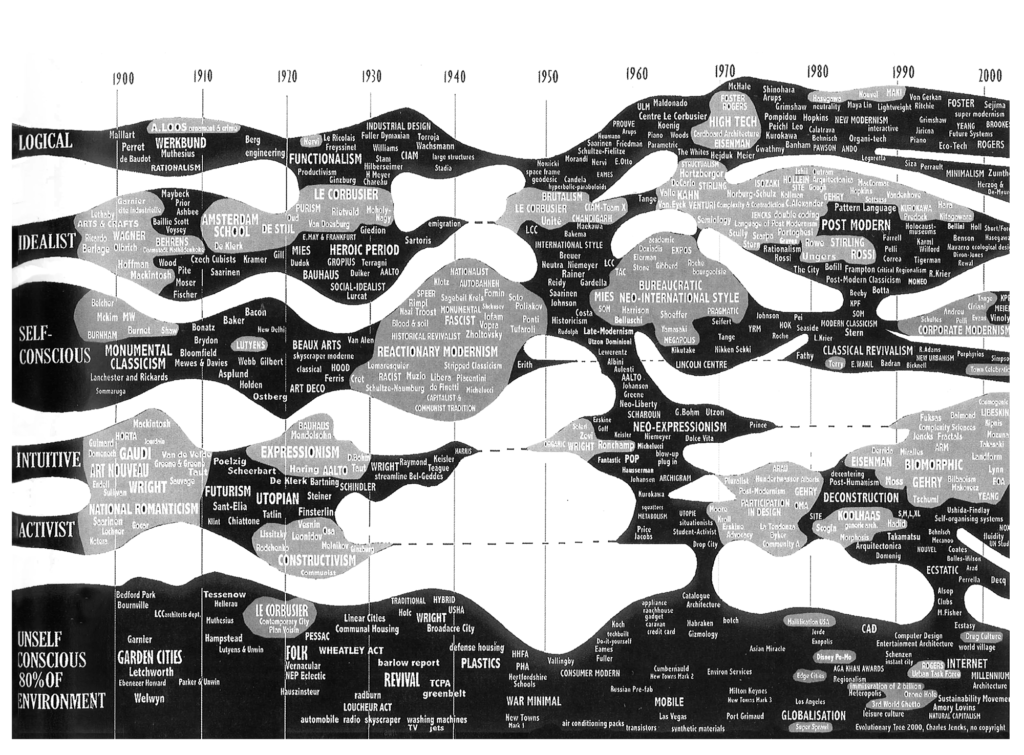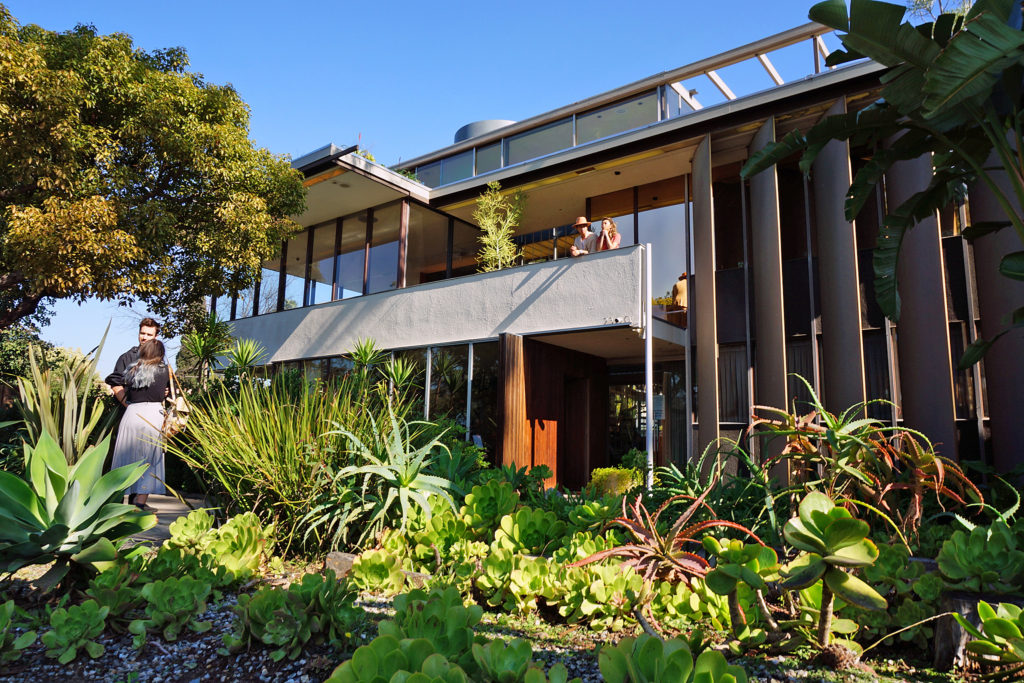Hi everyone, this article is a part of the new series emphasizing the multiple styles in architecture! Last week, we took a look at the rise and fall of Brutalist architecture. The style we will be dissecting today is Mid-century Modern!
Before we get started, let’s take a look at the diagram of the timelines below of the 19th and 20th-century architectural styles, ideologies, designers, and more to give you a better footing of our series. As you can tell, there’s a lot, and we will do our best to give you digestible information. It’s important to note, there’s no particular order we are writing, but every article will have this diagram for you to reference!
The Origin
While there is some disagreement about when the mid-century modern first made its appearance, it roughly lasted from the mid-1930s to the mid-1960s. However, the timeless quality of the style continues to appeal to today’s vast population with its clean lines and gentle organics curves. A fun fact you may not know is that mid-century modern architecture can be divided into three distinct styles:
The Bauhaus movement heavily influenced this version. Homes were extremely simple, with little to no embellishments, and were typically finished with stucco.
- This version emphasized a blending of architecture into their natural surroundings. Instead of sharp lines and right angles, designer embraced homes with more natural shapes. Due to this fact, an organic mid-century modern home on a mountain would look entirely different than one in a desert.
This version emphasized a blending of architecture into their natural surroundings. Instead of sharp lines and right angles, designers embraced homes with more natural shapes. Due to this fact, an organic mid-century modern home on a mountain would look entirely different than one in a desert.
This particular style was inspired by the high prairie style, which was developed by none other than American architect Frank Lloyd Wright. We will be discussing the high prairie style another time! This style and period didn’t pull its punches either, containing some of the most influential architects along with Frank Lloyd Wright, like Walter Gropius, Mies van der Rohe, and Marcel Breur.
It’s important to note: mid-century modern was originally considered a collection of homes built after World War II, rather than a specific style. Today, however, “mid-century modern” often denotes a particular building or decorating style. So without further ado, here are 5 defining elements that will help you identify a mid-century modern project!
1. Forms Follow Function
One of the prevailing themes of this style is nearly equal emphasis on function and form as modernist architecture! Similar to Brutalism, after WW II ended, returning soldiers required housing. As a result, large residentials developed in the suburbs filled up relatively quick and cheap homes to build. John Klopf, a San Francisco-based architect who specializes in Mid-century modern styles homes eloquently, provides a unique perspective about the intent behind this style,
A rather romantic perspective, but it demonstrates that after WW II, people just wanted refuge. If the home is meant to be comfortable rather than intimidating, color, texture, and shape should be welcoming and simple! This leads to our next defining element!
2. Color and Materials
Architects incorporated more natural materials to the interior spaces, like exposed beams, wood-paneled walls, concrete, and other stone features. The majority of the interior and colors were inspired and/or taken from the environment, literally bringing the outdoors in.
To create the look of a mid-century modern home through color, consider earthy tones like olive green, pumpkin, or mustard yellow while having splashes of color, like pink, gray, or turquoise. The list can go on, so be sure that you double-check your colors!
3. Minimalist Exterior Aesthetics
Stemming from modernist architects’ philosophy, mid-century modern architecture continued its separation from Beaux-Arts and other embellished influences. As a result, this style often exhibits little historical influence and lacks visual formality while emphasizing planes, straight lines, and right angles. Ultimately, a building’s appeal depends more on its entire structure and should allow an onlooker to comprehend the home’s structure at first glance.
Another element you’d often find in mid-century architecture is floor-to-ceiling windows adding to its minimalist exterior. This also brings us to our next point!
4. Connection to the Outdoors
 Large windows can make its inhabitants feel more connected to the outdoors by blending and blurring the interior versus exterior. Along with an open floor plan, large windows gave an additional experience by providing scenic views and a plethora of light illuminating the interior.
Large windows can make its inhabitants feel more connected to the outdoors by blending and blurring the interior versus exterior. Along with an open floor plan, large windows gave an additional experience by providing scenic views and a plethora of light illuminating the interior.
A crucial factor that mid-century architecture finds itself wanting to connect with nature is encouraging occupants to appreciate healthy living, mirroring a very northern-European way of living. Falling Water, designed by Frank Lloyd Wright, is an amazing example of this concept in practice. Wright’s decision to place this project above the waterfall requires people to stroll into nature to see it for themselves.
Unfortunately, I haven’t had the pleasure to visit this amazing work, but my peers have told me that it’s worth it!
5. Changes to Elevations
Many mid-century modern homes are split-level, with short staircases connecting rooms throughout the house. It’s possible to find partial brick or glass walls, fireplaces centered in rooms, and cabinetry that added depth and variation in the interior elevations. These elevation changes include the exterior, too, as seen in Falling Water and the Farnsworth house.
Although having some cons of having a higher overall maintenance cost, many are still obsessed with this architecture and interior design style! I can’t argue with the people, though, because I feel that it’s a “timeless” style that can fit most situations. If you are interested in seeing more mid-century modern homes, you can find the largest collection of these homes in Palm Springs, California. In fact, some of the world’s most famous mid-century modern architects built homes, hotels, motels, and other structures in Palm Springs for you to experience firsthand! So what are you waiting for? Let us know if you visited Palm Springs or love a particular mid-century project! We might even select it for our new series on Youtube.
Well, that’s all we have for you today, and if you’ve made it this far, you deserve a cookie🥠. I hope you found this article interesting and took something from it! Sharing is caring! We hope to provide you with valuable insights and share them with someone who might find this useful. Make sure to follow our Youtube and Instagram for more content!




There’s certainly a lot to learn about this topic. I really like all the points you made.